|
Watering your lawn in the hot, humid summers of Louisiana presents unique challenges. With temperatures often soaring and rainfall being unpredictable, maintaining a lush, green lawn requires strategic planning and careful water management. Here are key tips to help you water your lawn efficiently and effectively throughout the summer months in Louisiana. 1. Understand Your Lawn's Water Needs
Louisiana lawns typically need about 1 to 1.5 inches of water per week, whether from rainfall or irrigation. This helps ensure that the water reaches deep into the roots, promoting healthier growth. Use a rain gauge to keep track of how much water your lawn is receiving naturally, adjusting your watering schedule accordingly. 2. Water Early in the Morning The best time to water your lawn is early in the morning, preferably before 10 AM. This timing reduces evaporation and allows the water to soak deeply into the soil, reaching the roots where it’s needed most. Morning watering also helps prevent the growth of fungi and diseases, which are more likely to develop if the grass remains wet overnight. 3. Use Pulsed Watering Techniques Given the intense heat of Louisiana summers, employing a pulsed watering technique can be more effective. This involves watering in short bursts, allowing the water to soak in before adding more. For example, water for 15 minutes, then wait 30 minutes to allow the water to penetrate, and water again if needed. This method helps prevent runoff and ensures deeper water infiltration. 4. Choose the Right Irrigation System Invest in a good quality sprinkler system that suits the size and shape of your lawn. Drip irrigation systems are great for gardens but less effective for large grass areas. For lawns, oscillating sprinklers or in-ground irrigation systems with timers can provide even coverage and can be set to operate during optimal watering times. 5. Adjust Sprinklers for Even Coverage Make sure your sprinklers are adjusted to avoid wasting water on driveways, sidewalks, or the street. Check the system regularly for blocked or broken heads and overlap the sprinkler patterns to ensure even coverage. This helps prevent dry spots and ensures that every part of your lawn receives sufficient water. 6. Monitor Soil Moisture Use a screwdriver or soil probe to check soil moisture. A moist soil that allows a screwdriver to penetrate easily indicates good hydration. If the soil is hard and dry, it’s a sign that your lawn needs more water. Regular monitoring helps tailor your watering schedule based on actual soil conditions, which can vary throughout the summer. Conclusion Watering your lawn effectively during a Louisiana summer requires more than just turning on the hose. By understanding your lawn’s specific needs, employing the right watering techniques, and optimizing your lawn care practices, you can maintain a healthy and resilient yard even under challenging conditions. These strategies not only promote a lush, green lawn but also contribute to water conservation efforts, essential in the warm and wet climate of Louisiana.
1 Comment
As the heat of summer intensifies in July in Baton Rouge, Louisiana, maintaining a vibrant and healthy landscape can be a challenge. With high temperatures and humidity, your garden and lawn require careful attention and specific care strategies. Here are some valuable landscaping tips to help you keep your outdoor space thriving throughout the sultry Louisiana summer. 1. Water Wisely
In the intense heat of July, proper watering is crucial for the survival of your plants. It’s best to water your garden and lawn early in the morning. This timing allows the water to seep deeply into the soil, reaching the roots while minimizing evaporation. For lawns, an inch of water per week, including rainfall, is typically sufficient. Consider investing in a rain gauge to help monitor the amount of water your garden receives. 2. Adjust Your Mowing Height Tall grass can handle heat better because it shades the soil and reduces water loss. Raise the cutting deck of your mower to leave grass taller, about three inches, during the summer months. This height helps protect the roots from the searing sun and also encourages deeper root growth, which is essential for withstanding dry spells. 3. Mulch to Retain Moisture Mulching is highly beneficial during the hot summer months. A good layer of mulch (about 2-3 inches) around your plants and trees will help retain moisture in the soil, suppress weeds, and provide a barrier against soil erosion. Organic mulches like bark or straw not only retain moisture but also break down over time to improve soil quality. 4. Focus on Pest Control July is a prime time for pests and diseases in Baton Rouge. Regularly inspect your plants for signs of distress like wilting, blight, or pest infestation. Early detection is key to managing potential issues before they spread. Consider eco-friendly pest control solutions like neem oil or insecticidal soaps, which are less harsh on your plants and the environment. 5. Plant Heat-Tolerant Varieties If you’re planning to add new plants to your garden in July, choose species that are known for their heat tolerance. Some great options for Baton Rouge include Lantana, Zinnia, and Marigold, which thrive in full sun and can handle the heat. These plants not only brighten up your landscape but also require less water and maintenance. 6. Prune and Deadhead Regularly Regular pruning helps to improve air circulation and light penetration, which are crucial for the health of your plants. Remove any dead or diseased branches to help your plants focus their energy on growth and recovery. Deadheading spent flowers encourages plants to produce more blooms and extends the flowering period. 7. Prepare for Storms July can also bring about sudden summer storms. Prepare your landscape by ensuring that all trees and shrubs are properly pruned to avoid damage from strong winds. Secure any loose garden decorations and furniture to prevent them from being thrown about in a storm. 8. Fertilize with Care While fertilization is important, excessive feeding during the peak summer months can damage your plants. Plants under heat stress may suffer from a rapid increase in growth due to high fertilizer levels, making them more susceptible to diseases and pests. If you must fertilize, opt for a slow-release or organic fertilizer, which is less intense. 9. Create Shade Consider creating temporary shade for your most vulnerable plants during the hottest part of the day. Use shade cloths or even portable umbrellas to protect plants from the harsh midday sun. This can be particularly beneficial for young plants that haven’t yet established a robust system to handle the intense sun. 10. Enjoy Your Garden While maintaining a garden in the heat of July in Baton Rouge can be challenging, it’s also a rewarding endeavor. Take time to enjoy your garden early in the morning or later in the evening when the temperatures are more comfortable. These are also excellent times to perform gardening tasks. Conclusion July in Baton Rouge is a testing time for any gardener, but with the right strategies, you can keep your landscape lush and beautiful. By watering wisely, adjusting your mowing height, and focusing on pest control, you can maintain a healthy garden even under the challenging conditions of a Louisiana summer. Remember, the key to successful summer landscaping is adapting to the environment and ensuring your plants have what they need to thrive. With these tips, you’re well on your way to enjoying a vibrant garden all season long. Storms, whether they bring wind, rain, or hail, can wreak havoc on your garden. Preparing your outdoor space for inclement weather is crucial to minimize damage and ensure the survival of your plants. Here's a guide on how to safeguard your garden before a storm hits. 1. Secure Loose Objects
The first step in preparing your garden for a storm is to secure or remove any loose objects. Garden tools, decorative items, potted plants, and even patio furniture can become projectiles in strong winds. Store these items in a shed or garage, or anchor them securely to the ground. This not only protects your garden but also prevents damage to your home and neighboring properties. 2. Check Drainage Proper drainage is essential to prevent waterlogging, which can kill plants by suffocating their roots. Before a storm, check your garden’s drainage system to ensure it’s clear of debris. If you notice areas where water tends to collect, consider adding additional drainage or creating a rain garden to capture excess water. 3. Prune Trees and Shrubs Weak branches can easily break off during a storm, posing a threat to the rest of the plant and nearby structures. Look for hanging or leafless limbs. Before storm season, prune dead or weak branches from your trees and shrubs. This not only reduces the risk of damage but also encourages healthier growth. 4. Provide Support for Tall Plants Tall plants, especially those that are top-heavy or have large blooms, can be vulnerable in high winds. Provide support with stakes or a trellis to help them withstand the force. Ensure that the support is sturdy and anchored deeply into the soil to provide adequate resistance against strong winds. 5. Cover Vulnerable Plants For plants that are too delicate to withstand harsh conditions, use a cover for protection. Floating row covers, burlap, or even old bed sheets can shield plants from heavy rain and hail. Secure the covers with stones or heavy objects to keep them from blowing away. 6. Elevate Containers and Potted Plants Move potted plants to a sheltered location or elevate them to avoid waterlogging. Placing containers on pot feet or bricks allows excess water to drain away, reducing the risk of root rot. 7. Apply Mulch Applying a layer of mulch can help prevent soil erosion caused by heavy rains. Organic mulches like wood chips or straw not only keep the soil in place but also help maintain moisture levels during dry spells that may follow the storm. Pine straw is a great choice for areas with a lot of water as they do not float away. 8. Assess Your Garden’s Layout Consider the layout of your garden when preparing for storms. Planting in raised beds or on slopes can enhance drainage and reduce the risk of waterlogging. Strategic placement of hardy shrubs can provide a windbreak that shields more delicate plants. 9. Plan for Quick Recovery Have a recovery plan in place. Keep a supply of necessary tools and materials, such as extra soil, mulch, and replacement plants. Knowing what you need to do to restore your garden quickly can make the recovery process smoother and faster. 10. Stay Informed Finally, stay informed about the weather. Knowing when a storm is likely to hit gives you enough time to perform these preventive measures and safeguard your garden effectively. Conclusion Storms can be unpredictable, but with proper preparation, you can significantly mitigate the damage they may cause to your garden. By taking steps to secure loose objects, enhance support for plants, and improve your garden’s drainage, you ensure that your garden is better equipped to withstand the forces of nature. Post-storm, take the time to assess any damage and start the recovery process promptly to keep your garden thriving. Virginia buttonweed, a common nemesis in Louisiana landscapes, often appears as a deceivingly small plant, growing up to around 7 inches in length. This pervasive weed typically spreads horizontally, with stems that ascend to about two inches above the ground. Recognizable by its small, white, star-shaped flowers that bloom in June, Virginia buttonweed is notorious for its resilience and tenacity. The Resilience and Spread of Virginia Buttonweed in LouisianaIn Louisiana, Virginia buttonweed thrives not only in wet, swampy environments reflective of the state's natural landscape but also in well-maintained lawns. This weed is adaptable, managing to survive even in drier conditions. Its reproduction strategies are particularly robust, featuring seeds that can float and disperse widely across different terrains. Furthermore, Virginia buttonweed's extensive root system is capable of spawning new plants through rhizomes or from cut stems—making it a frequent, unwelcome guest each time you mow your lawn. How To Get Rid of Virginia Buttonweed?Selective herbicide control is your best option, aside from killing your existing yard with Glyphosate and restarting from scratch with sod. (DO NOT use Glyphosate on your turf unless you want your turf to die also.) Selective herbicides with some of the following active ingredients work to an extent: 2,4-D, MCPP, Dicambia. The herbicide Image works better the earlier in the year you use it. So will Weed Stop for Lawns. Both Image and Weed Stop for Lawns should not be used when it is hotter than the specified temperature on their product label or your lawn will suffer damage. Products we use are Celsius by Bayer or Avenue South by PBI-Gordon Turf. Both work very well, even in warm temperatures. All of the Virginia buttonweed herbicides that we have seen require a second application around 4 weeks after the initial treatment. This is due to how easily Virginia buttonweed reproduces. Virginia buttonweed is a challenge so remain patient. Professional Fertilization and Weed ControlFor those in the greater Baton Rouge, New Orleans, and surrounding areas such as Slidell, Prairieville, and Covington, professional assistance is available. GreenSeasons specializes in lawn fertilization and weed control, offering expert services tailored to maintain the health and appearance of your green spaces. If you suspect a weed problem or simply aspire for a lush, vibrant lawn, consider reaching out to GreenSeasons for a free quote on weed control solutions, ensuring your yard remains beautiful and buttonweed-free.
Give us a call at (225) 752-2333. Winning the Battle Against Carolina Geranium: A Guide for Baton Rouge Homeowners by GreenSeasons3/11/2024 In the heart of Baton Rouge, Louisiana, homeowners take pride in their lush, well-manicured lawns that not only beautify their properties but also contribute to the overall charm of their neighborhoods. However, the battle for a perfect lawn is often challenged by the invasive presence of Carolina geranium (Geranium carolinianum), a common weed that can detract from the lawn's appearance and health. GreenSeasons, a leader in lawn care and landscaping services in Baton Rouge, offers comprehensive strategies to control Carolina geranium and restore the beauty of your lawn. Understanding Carolina Geranium
Carolina geranium, also known as cranesbill, is a winter annual weed recognizable by its dissected leaves and small, pink to purplish flowers. It typically emerges in the cooler months and can spread rapidly, competing with grass and ornamental plants for nutrients, water, and space. Its resilience and ability to produce numerous seeds make it a formidable opponent for homeowners aiming for pristine lawn conditions. The Impact of Carolina Geranium While Carolina geranium might not be the most aggressive weed, its presence signals that your lawn might not be in optimal health. It tends to invade areas where the grass is weak or sparse, creating unsightly patches that can diminish curb appeal and the overall aesthetic of your outdoor space. Furthermore, its ability to spread quickly can lead to more significant infestations if not addressed promptly. GreenSeasons' Expert Control Strategies 1. Promote Lawn Health The foundation of effective weed control, including against Carolina geranium, lies in maintaining a vigorous, healthy lawn. GreenSeasons recommends a comprehensive lawn care routine that includes proper fertilization, regular mowing, and adequate watering. A well-fed and properly maintained lawn can outcompete most weeds, including Carolina geranium, by providing little space for them to establish. 2. Correct Mowing Techniques Mowing your lawn to the right height can significantly deter Carolina geranium growth. Grass that is too short can weaken and create opportunities for weeds to take over. Keep your lawn at a height of approximately 2.5 to 3 inches to encourage dense growth and reduce the light available to weed seeds on the soil surface. Regular mowing also helps remove weed flowers before they can produce seeds, reducing future infestations. 3. Manual Removal For small infestations, manual removal of Carolina geranium can be effective. Ensure you pull out the entire plant, including the root, to prevent regrowth. This method is most efficient when the soil is moist, such as after a rain, making it easier to remove the weed completely. GreenSeasons advises wearing gloves and using a tool, like a dandelion fork, to make the task easier and more effective. 4. Targeted Herbicide Use In cases where Carolina geranium has spread widely, a selective herbicide may be necessary. Selective herbicides can target broadleaf weeds without harming your grass. GreenSeasons recommends using these products in the early stages of growth for best results. It's crucial to follow the manufacturer's instructions for application rates and safety precautions to protect your lawn, yourself, and the environment. 5. Soil Health and Aeration Compacted soil can hinder the growth of healthy grass and encourage weeds like Carolina geranium. GreenSeasons offers professional aeration services to improve soil structure, allowing air, water, and nutrients to penetrate deeper into the ground. This process encourages deeper root growth of your lawn grass, enhancing its ability to compete with and suppress weed growth. 6. Professional Lawn Care Assistance Managing Carolina geranium and maintaining a healthy lawn can be challenging and time-consuming for many homeowners. GreenSeasons provides professional lawn care services tailored to the specific needs of Baton Rouge lawns. Our expert team can develop a personalized plan that includes weed control, fertilization, aeration, and more to ensure your lawn remains vibrant and weed-free. Conclusion Carolina geranium can be a persistent problem in Baton Rouge lawns, but with the right approach, it is possible to control this weed and achieve a lush, beautiful lawn. By focusing on lawn health, using proper mowing techniques, and considering professional lawn care services, homeowners can effectively manage Carolina geranium and other common lawn weeds. GreenSeasons is committed to helping Baton Rouge residents enjoy their outdoor spaces to the fullest, with healthy, weed-free lawns that reflect the pride of homeownership. For more information on controlling Carolina geranium or to schedule a lawn care consultation, visit GreenSeasons' website or contact us directly. Let our team of lawn care professionals help you achieve the perfect lawn you've always dreamed of. In the lush landscapes of Baton Rouge, Louisiana, homeowners pride themselves on their vibrant, healthy lawns that add beauty to their homes and the community. However, amidst the verdant green, an uninvited guest often makes an appearance: white clover. While some may find its white flowers charming, white clover can be more than just an aesthetic nuisance; it's a sign of underlying lawn health issues. GreenSeasons, a leading lawn care and landscape company in Baton Rouge, offers homeowners expert advice on controlling white clover and maintaining the health and beauty of their lawns. Understanding White Clover
White clover (Trifolium repens), a perennial weed, is known for its distinctive trifoliate (three-leaf) leaves and white, ball-shaped flowers. It thrives in lawns that are low in nitrogen since it can fix its own nitrogen, giving it an advantage over traditional grasses. This ability makes white clover a common sight in lawns that are undernourished. Why Control White Clover? While some homeowners may not mind the appearance of white clover, it can quickly spread and take over a lawn, competing with grass for space, light, and nutrients. Additionally, white clover attracts bees, which, while beneficial for pollination, can be a concern for families with young children or those allergic to bee stings. Proper management and control of white clover are essential for maintaining a lush, uniform lawn that enhances your home's curb appeal. Expert Tips from GreenSeasons 1. Maintain Lawn Health The first step in controlling white clover is to address the underlying cause of its proliferation. GreenSeasons recommends a soil test to determine your lawn's nutrient levels. If your soil is low in nitrogen, consider applying a slow-release nitrogen fertilizer to help your grass compete more effectively against white clover. Regular feeding, proper mowing, and adequate watering are critical to maintaining a healthy, dense lawn that can resist weed invasion. 2. Proper Mowing Practices Mowing your lawn at the right height can also help control white clover. Grass that is too short may become stressed and thin, creating opportunities for white clover to spread. GreenSeasons suggests keeping your lawn at a height of about 2.5 to 3 inches. This height helps the grass shade out weeds and encourages deeper root growth, making your lawn more resilient. 3. Weed Removal and Control For immediate white clover removal, hand-pulling can be effective, especially if the problem is localized. Ensure you remove the entire root system to prevent regrowth. For larger infestations, GreenSeasons recommends selective herbicide treatments that target broadleaf weeds without harming the grass. It's essential to follow the product instructions carefully and apply during optimal conditions to avoid damage to surrounding plants and maximize the herbicide's effectiveness. 4. Consider Clover's Benefits In some cases, homeowners may choose to embrace white clover as a part of their lawn. Its ability to fix nitrogen can improve soil health, and its flowers are attractive to pollinators. If you decide to keep some clover, GreenSeasons advises managing its spread to maintain a balance with your grass and ensure a diverse, healthy lawn ecosystem. 5. Professional Lawn Care Services Controlling white clover and maintaining a healthy lawn can be time-consuming and requires ongoing effort. GreenSeasons offers professional lawn care services tailored to Baton Rouge's unique climate and soil conditions. Our team of experts can provide customized fertilization, weed control, and lawn maintenance plans to keep your lawn looking its best all year round. Conclusion White clover control is more than just a cosmetic issue; it's about maintaining the health and vitality of your lawn. By understanding the reasons behind clover's appearance and taking proactive steps to improve lawn health, Baton Rouge homeowners can enjoy lush, beautiful lawns that enhance their property's value and appeal. Whether you choose to tackle white clover on your own or seek professional assistance from GreenSeasons, the key is consistent care and attention to your lawn's needs. For more information on our lawn care services or to schedule a consultation, visit GreenSeasons' website or contact us directly. Let us help you achieve the beautiful, clover-free lawn you deserve. Early spring in South Louisiana offers a unique opportunity to rejuvenate your lawn and landscape, preparing it for the vibrant growth of the warmer months. The mild climate, characterized by warm, humid days and cool evenings, creates an ideal environment for many types of grasses, plants, and flowers. Here's an 800-word guide on how to make the most of this season for your lawn and landscape. Assess and Clean
1. Assessment Begin with a thorough assessment of your lawn and garden. Look for winter damage, noting areas that may need special attention, such as patches where grass has thinned or plants that didn't survive the cooler months. 2. Cleanup Clear debris, such as fallen branches, leaves, and thatch (a layer of dead grass and roots) that may have accumulated over the winter. Removing this material not only tidies up your yard but also improves air and moisture penetration to the soil. Soil Preparation 3. Soil Testing Conduct a soil test to determine its pH and nutrient levels. South Louisiana soils can vary greatly, and knowing your soil's composition will help you make informed decisions about fertilizing and amending your soil for optimal plant health. 4. Aeration Aerating your lawn can relieve soil compaction, allowing roots to breathe and grow more deeply. This process involves making small holes in the soil to improve water, nutrient, and oxygen absorption. 5. Fertilization Based on your soil test results, apply a spring lawn fertilizer that's appropriate for your grass type. In South Louisiana, lawns are often composed of warm-season grasses like Bermuda, Zoysia, or St. Augustine, which benefit from fertilization as they begin active growth. Lawn Maintenance 6. Mowing As the weather warms and your lawn starts to grow, begin mowing at the recommended height for your grass type. This usually means keeping the blades high to encourage root development and shade out weeds. 7. Watering Begin watering your lawn and garden as necessary. Early spring often brings rain, but during dry spells, ensure your lawn receives about an inch of water per week. Morning watering is best to reduce evaporation and disease risk. Planting and Landscaping 8. Plant Selection Choose plants that are well-suited to the South Louisiana climate. Consider native plants, which are adapted to the local environment and require less maintenance. Early spring is a good time to plant perennials, as well as some annuals, for a season-long display. 9. Vegetable and Herb Gardens Early spring is the perfect time to start a vegetable or herb garden. Consider starting with cool-season crops like lettuce, spinach, and cilantro, transitioning to warm-season varieties like tomatoes, peppers, and basil as the weather warms. 10. Mulching Apply a layer of mulch around trees, shrubs, and garden beds to retain moisture, regulate soil temperature, and reduce weed growth. Organic mulches, such as wood chips or pine straw, also add nutrients to the soil as they decompose. Pest and Weed Management 11. Weed Control Early intervention is key to managing weeds. Apply pre-emergent herbicides to prevent weed seeds from germinating, and hand-pull or use post-emergent herbicides for any weeds that have already appeared. 12. Pest Monitoring Keep an eye out for signs of pests, such as damaged leaves or unhealthy plant growth. Early detection can make management easier, whether through cultural practices, natural predators, or, if necessary, appropriate pesticides. Seasonal Considerations 13. Frost Protection While rare, late frosts can occur. Be prepared to protect tender plants with frost cloths or by bringing potted plants indoors on chilly nights. 14. Pruning Early spring is a good time to prune certain shrubs and trees, removing dead or diseased wood and shaping plants before the growing season. However, wait to prune spring-flowering shrubs until after they bloom to avoid cutting off flower buds. Ongoing Maintenance 15. Regular Inspection Regularly walk through your lawn and garden, looking for signs of stress or disease. Early detection and intervention can prevent many problems from becoming severe. 16. Adapt and Enjoy Be flexible and responsive to your landscape's needs. Conditions in South Louisiana can change rapidly, so adapt your maintenance practices as needed. Most importantly, take time to enjoy the beauty and bounty of your garden throughout the season. Conclusion Caring for your lawn and landscape in early spring sets the stage for healthy growth and lush beauty throughout the year. By following these steps, you can ensure that your outdoor space in South Louisiana thrives, providing a beautiful and enjoyable extension of your home. Remember, the key to a successful garden and lawn is consistent care and attention to the specific needs of your plants and the local climate. Happy gardening! Outdoor landscape sound systems have become an increasingly popular addition to home entertainment setups, transforming ordinary backyards into immersive, open-air listening environments. These systems offer a unique blend of aesthetic appeal, technological sophistication, and sensory enjoyment, making them an awesome choice for anyone looking to elevate their outdoor living spaces. In this blog, we'll explore the reasons why an outdoor landscape sound system is a fantastic investment, touching on aspects such as sound quality, design integration, durability, versatility, and the overall enhancement of outdoor experiences. Exceptional Sound Quality
The primary allure of outdoor landscape sound systems lies in their ability to deliver rich, high-fidelity sound across a wide outdoor area. Unlike traditional portable speakers that might struggle to fill a space with sound evenly, landscape sound systems are designed to distribute audio seamlessly throughout your garden, patio, or pool area. These systems use a series of strategically placed speakers that blend into the outdoor environment, providing a uniform sound field that envelops listeners in music, podcasts, or any audio entertainment without disturbing neighbors with overly concentrated sound pockets. Seamless Design Integration Manufacturers of outdoor sound systems have gone to great lengths to ensure that their products can be integrated into any landscape design without detracting from its natural beauty or architectural elements. Speakers are often disguised as rocks, planters, or other garden features, making them virtually invisible to the eye. This means that homeowners don't have to compromise on style to enjoy their favorite tunes outdoors. The seamless integration also protects the equipment from casual observation, potentially deterring theft. Built to Last Durability is a critical factor in the design of outdoor audio equipment. Landscape sound systems are built to withstand the elements, from extreme temperatures and UV exposure to rain and snow. High-quality systems feature waterproof and weather-resistant materials that ensure long-term performance, even in harsh environmental conditions. This resilience makes them a wise investment, as they continue to provide entertainment without the need for frequent repairs or replacements. Unmatched Versatility One of the most compelling aspects of outdoor landscape sound systems is their versatility. They can be used for a variety of occasions, from a relaxing evening under the stars to lively gatherings and celebrations. Whether you're hosting a backyard barbecue, enjoying a quiet morning with a cup of coffee, or throwing a pool party, a landscape sound system can set the mood with the perfect soundtrack. Additionally, these systems can often be easily connected to a variety of audio sources, including smartphones, tablets, and home theater systems, providing endless entertainment options. Enhances Outdoor Experiences Ultimately, the addition of a landscape sound system transforms your outdoor space into a more inviting and enjoyable environment. It encourages outdoor living, inviting families and friends to spend more time in the fresh air and natural surroundings. The right music can enhance the ambiance of any outdoor setting, creating a relaxing, energizing, or romantic atmosphere as desired. For those who take pride in their gardens and outdoor areas, a sound system adds a sensory dimension that complements the visual beauty of the landscape. Conclusion Investing in an outdoor landscape sound system is a decision that offers numerous benefits, making it an awesome addition to any home. The combination of exceptional sound quality, seamless design integration, durability, versatility, and the overall enhancement of outdoor experiences justifies the investment. It's not just about playing music outdoors; it's about creating a fully immersive environment that elevates the quality of time spent in your outdoor living spaces. Whether you're an audiophile, a nature lover, or someone who enjoys hosting gatherings, a landscape sound system can significantly enhance your outdoor lifestyle, making every moment outside even more memorable. So, you're taking a leisurely stroll through your garden, dreaming of a floral paradise, and BAM! Moss decides to crash the party. Talk about an uninvited green guest. But fear not, my fellow garden enthusiasts! With a dash of humor and a sprinkle of easy steps, we'll show you how to give moss the boot and make room for your flowers to party on. Getting to Know Moss
Let's start by getting acquainted with our not-so-favorite neighbor, moss. It's like that friend who overstays their welcome. Moss loves hanging out in damp, shady spots with soil that's as compact as a crowded subway at rush hour. But worry not – we've got the perfect eviction plan for this green squatter. 1. Check Out Your Garden Vibes First things first, take a look around your flower beds. Are there shady spots hogging all the sunlight? Trim those overgrown branches and foliage to let the sunshine in. Moss doesn't do well in the spotlight, just like my cousin at family gatherings. 2. Give Moss the Cold Shoulder Moss hates the sun, so let's make your garden a sun-soaked paradise. Plant some flowers that love soaking up those rays. It's like turning your flower beds into a beach party – moss won't be caught dead in a sun hat. 3. Loosen Up the Soil Disco Moss loves to dance on compacted soil, but we're not hosting a rave here. Grab a garden fork and break up the soil. Let it breathe! Your garden should have the soil equivalent of a cool, indie coffee shop, not a packed dance floor. 4. H2-Oh No, Don't Overwater Moss thrives in soggy conditions, so let's not drown the party. Water your flowers like a responsible host – deep but not too often. Drip irrigation is like the VIP section for your plants – exclusive and targeted. 5. Soil pH Makeover Moss thinks acidic soil is the cat's pajamas. Show it the door by adding some lime to raise the pH. Think of it as a makeover for your garden – moss won't recognize the place. 6. Clean Up the Garden Party Mess Moss loves to crash in spots with loads of organic debris. Clean up those fallen leaves and twigs regularly. It's like telling moss, "Sorry, this party's for flowers only." 7. Bust Out the Moss-B-Gone Products If moss has already settled in like a stubborn in-law, it's time to bring in the heavy artillery – moss-killing products. Follow the instructions, and soon, moss will be history. Sayonara, green invader! 8. Scrape, Rake, and Toss Once the moss is defeated, scrape and rake it out of your garden. Treat it like yesterday's leftovers – into the bin it goes. No second chances for this party pooper. 9. Mulch Wisely Mulch can be a great ally, but not all mulches are created equal. Go for organic options like bark or wood chips. They decompose over time, unlike moss, which overstays its welcome. So, there you have it – a casual, humorous guide to reclaiming your flower beds from the mossy invasion. By making a few adjustments and showing moss the door, you'll be back to enjoying a garden filled with vibrant flowers and free from green gatecrashers. Let the floral fiesta continue! So, your lawn's looking like it just survived a deep freeze, huh? Brown patches, grass playing dead, and an overall "brrr" vibe? No worries – we're here to help you thaw out your outdoor space and have it looking sunny in the spring after it's been through a freeze-induced winter slump. In this laid-back guide, we'll spill the beans on how to revive your lawn and have it basking in the post-freeze sunshine. Getting to Know the Freeze Drama Before we embark on this lawn-recovery journey, let's get cozy with the drama your lawn went through during the freeze. Picture this: soil turned into a rock-hard popsicle, grass roots wrapped up like winter burritos, and your lawn becoming the neighborhood ice queen. Understanding these issues is like getting the inside scoop – it'll guide your comeback strategy and help you show your lawn some serious love. Lawn Inspection Time Grab a cup of something warm, and let's take a stroll around your yard. Spot any spots that look like they've seen better days? Brown or dead grass, soil as hard as frozen yogurt – take note of it all. And keep an eye out for any unwanted guests like pests or diseases that hibernated in your lawn. Poke Some Holes – Lawn Aeration Style Your lawn needs a post-freeze massage, literally. Rent a lawn aerator and let it do its thing, poking holes in the soil like it's giving your lawn a spa day. This helps the soil loosen up, allowing water and nutrients to defrost and mingle with the grass roots. Think of it as your lawn's hot tub party. Throwing a Grass Seed Mardi Gras Your lawn's going to need some new friends – grass friends, that is. Pick up a quality grass seed blend that vibes with your region and your lawn's personality. Spread that seed like confetti, making sure it gets cozy with the soil. This will fill in the bare spots, bring the grass back to life, and give your lawn some serious springtime swagger. Fertilize Smart, Not Hard Time to feed your lawn, but don't go overboard – we're not trying to stress it out more. Grab a balanced fertilizer, the kind your grass would appreciate, and sprinkle it like you're seasoning a hearty winter stew. Follow the instructions, and for the love of all things green, water the lawn after. It's thirsty, you know? Watering Wisdom Watering is an art form, my friend. Forget about sprinkling like you're in an ice fight. Your lawn prefers deep sips, not shallow sips. Water early in the morning – it's like a sunrise for your grass. And if you're really fancy, invest in a smart irrigation system. It's like having a lawn butler that knows exactly when to defrost the crew. Mowing: Grass Haircuts, Not Stressful Makeovers Your lawn's hair needs a trim, but don't get scissor-happy. Raise the mower blade, let the grass hair grow a bit taller. Longer grass means less evaporation, deeper roots, and an all-around happy lawn. And keep those mower blades sharp – your grass deserves a clean, stress-free cut. Evicting Unwanted Lawn Guests Pests and diseases crashing the post-freeze party? Show them the door. Keep an eye out for weird stuff – discolored or damaged grass, suspicious patches – and consult the local gardening whisperer for advice. Integrated pest management is the cool way to handle these party crashers, combining a bit of everything to kick them out. Pampering the Soil Your soil needs some love too, you know. Introduce it to organic matter – compost, well-rotted manure, the good stuff. Spread it over the lawn like a cozy blanket and rake it in. This is like a spa treatment for your soil, making it the envy of the neighborhood. Zen Mode: Patience and Consistency Recovering your lawn isn't a sprint; it's a thaw. Don't rush it, and don't go all out with treatments that might stress out your grass even more. Keep an eye on the progress, make tweaks as needed, and enjoy the journey. Your lawn will thank you in its own green way. Turning your lawn from a freeze hangover into a sunny haven is a laid-back process that requires some chill vibes and a bit of effort. Poke some holes, throw a grass seed fiesta, fertilize with care, water like a pro, give your grass a post-freeze spa day, and kick out any unwanted guests. With a bit of patience and consistency, your lawn will be the life of the neighborhood party in no time. So, grab your gardening gloves and let's get that lawn back to its lush, green glory – because every lawn deserves a warm comeback!
|
AuthorCharlie Casselberry Categories
All
Archives
April 2024
|
Contact |
Services |
About |
Locations
|
GreenSeasons
|
Baton Rouge Office
11628 S Choctaw Drive, Suite 227 Baton Rouge, Louisiana 70815 |
Greenwell Springs Office
14461 Frenchtown Road Greenwell Springs, LA 70739 |
Slidell Office
56010 Highway 433 Slidell, Louisiana 70461 |
© 2020 GreenSeasons




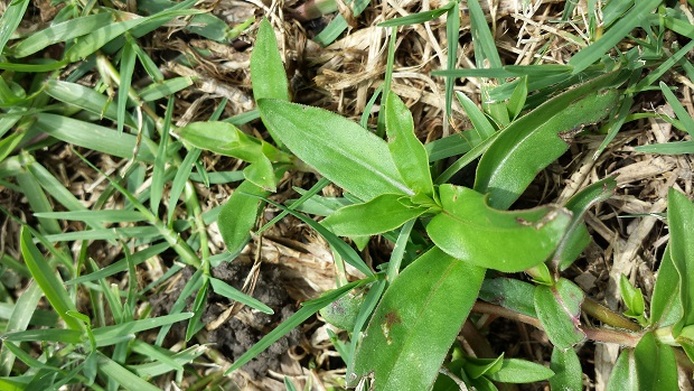
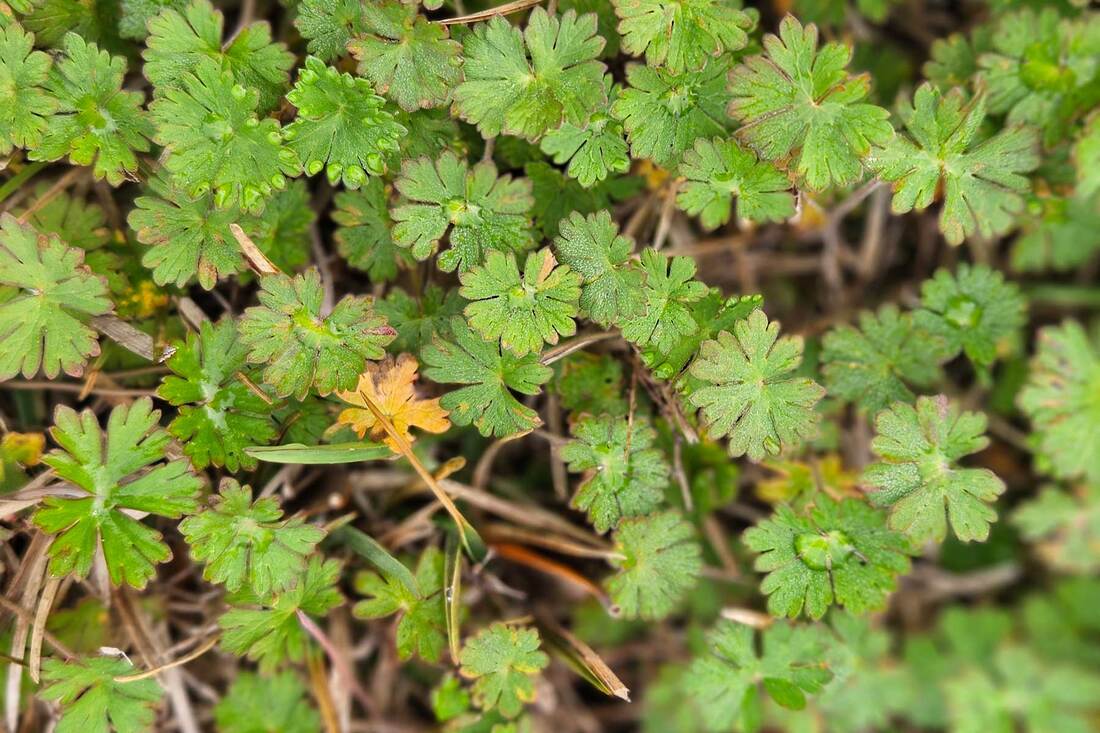
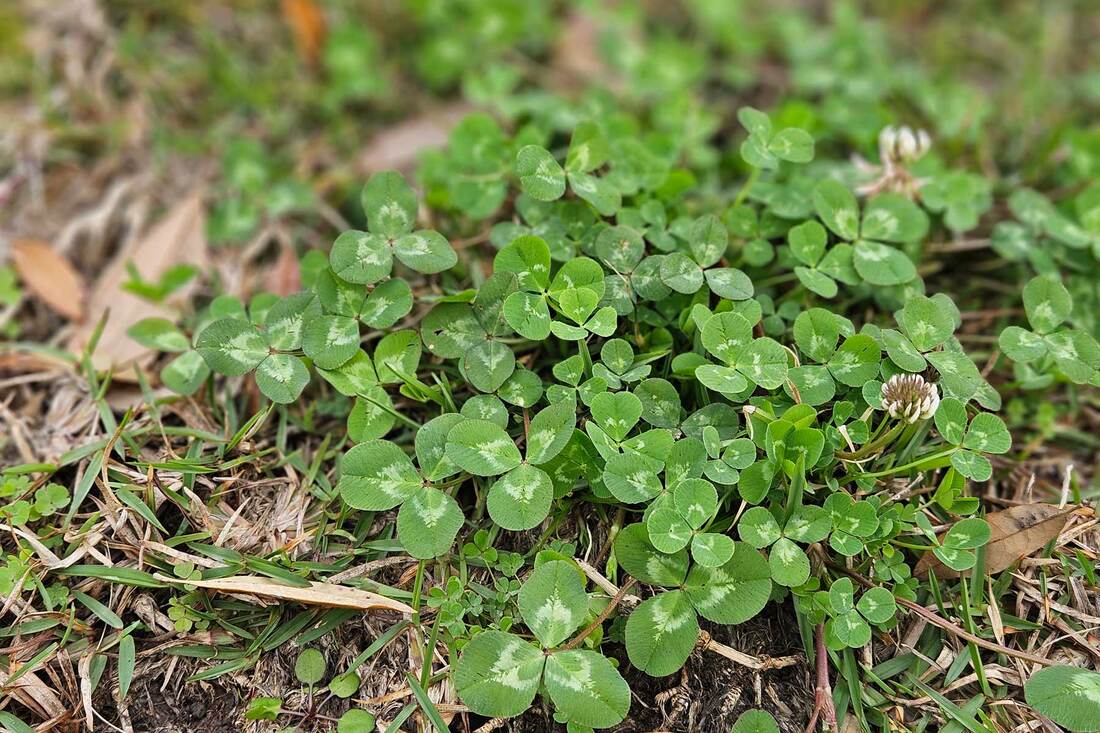
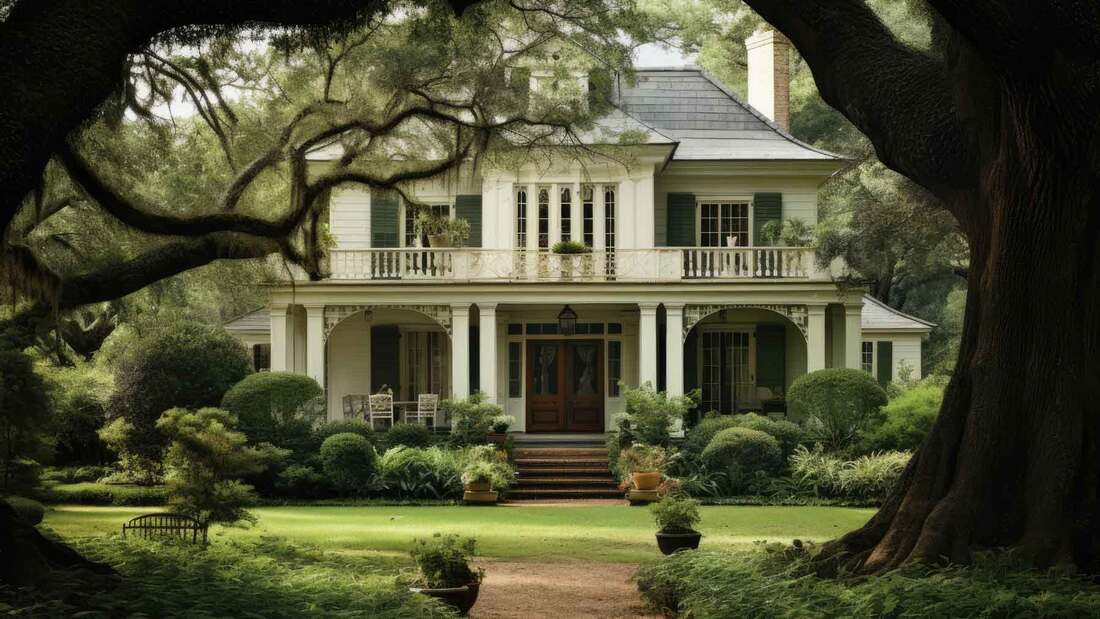
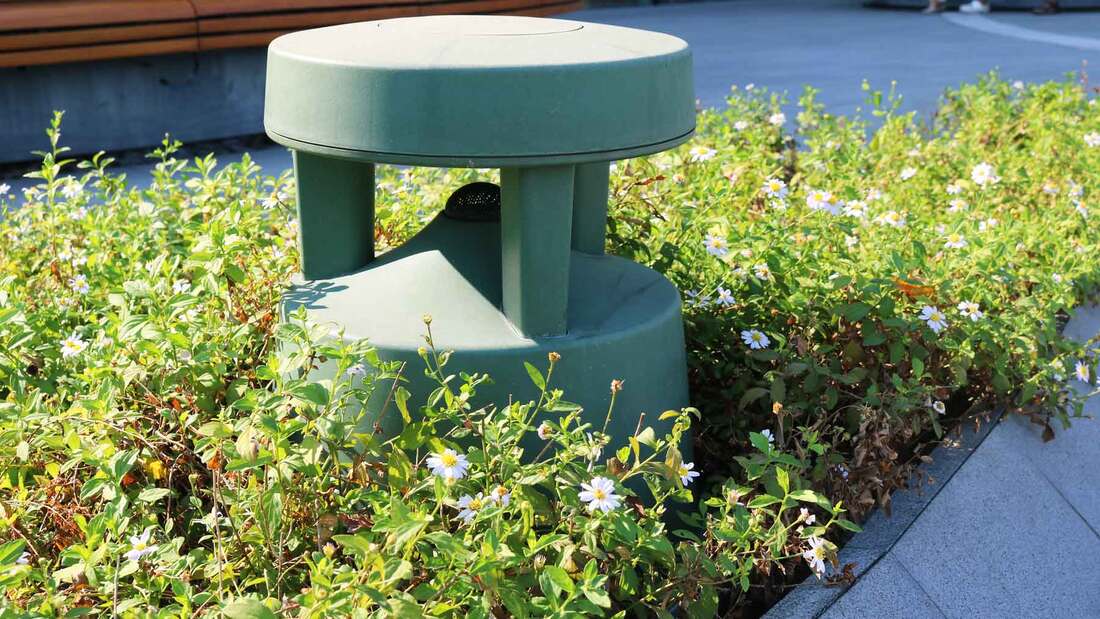
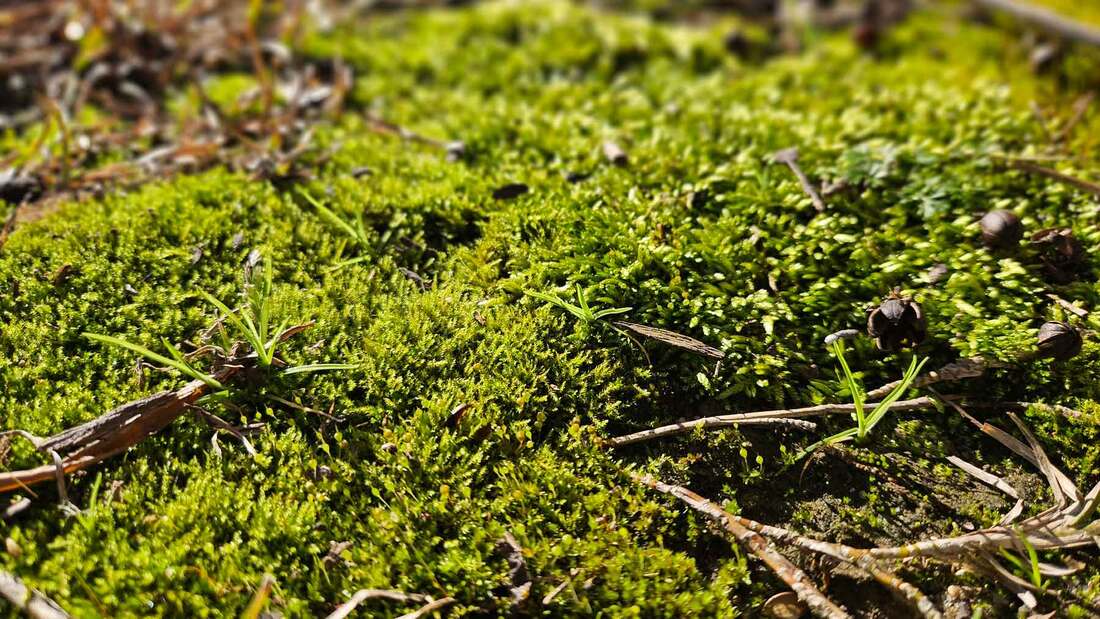
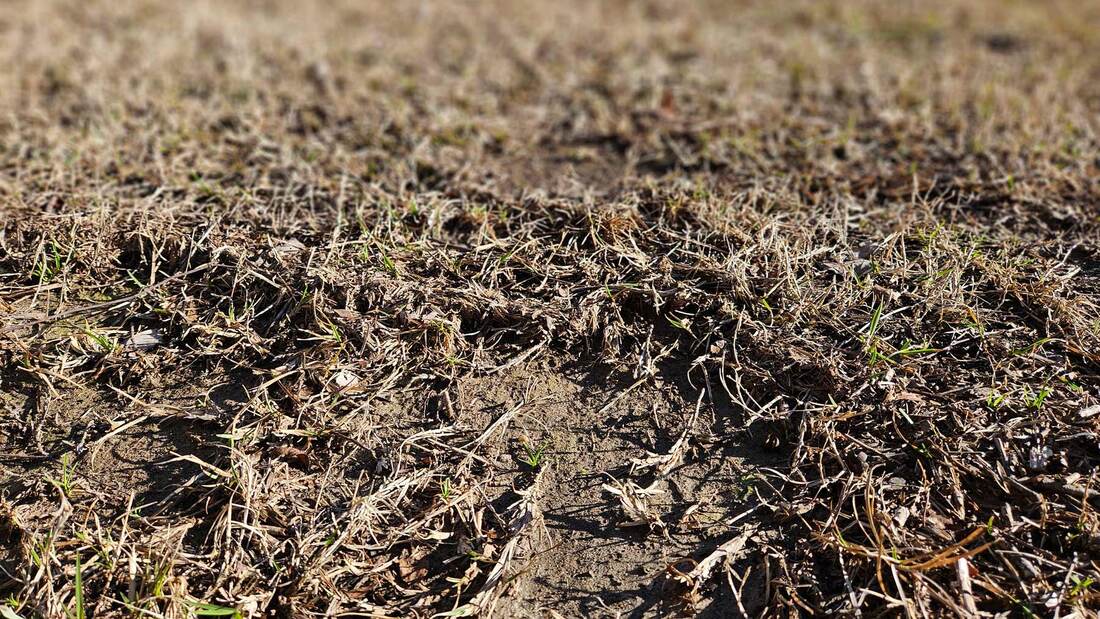
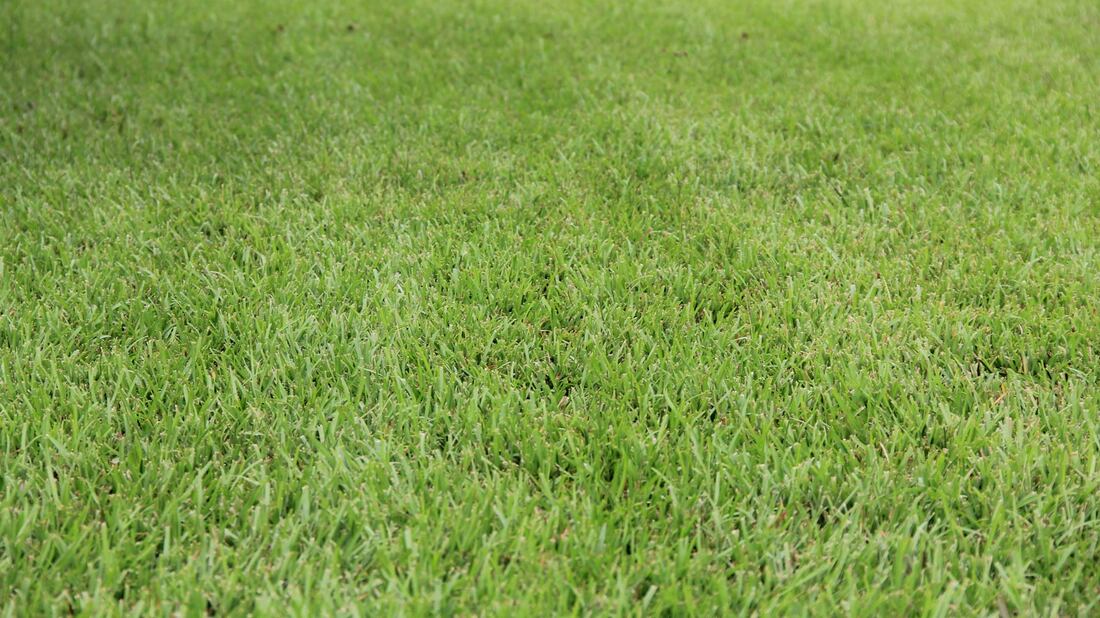

 RSS Feed
RSS Feed
